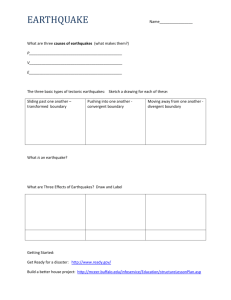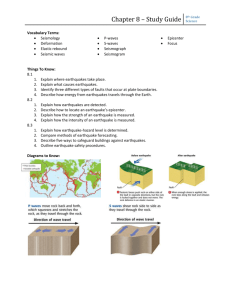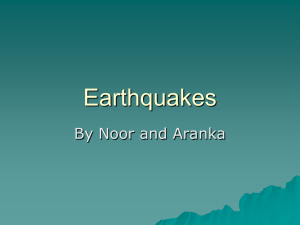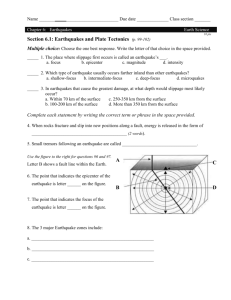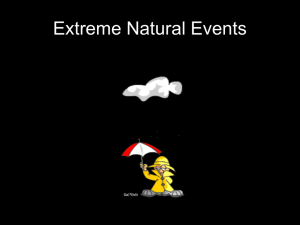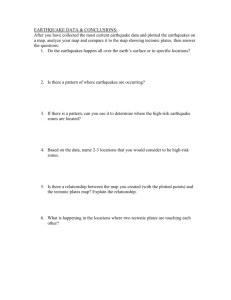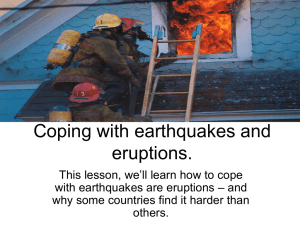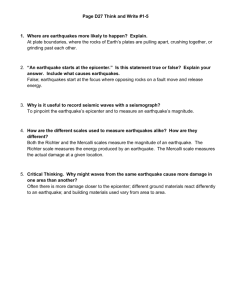The Great 1906 San Francisco Earthquake Worksheet
advertisement
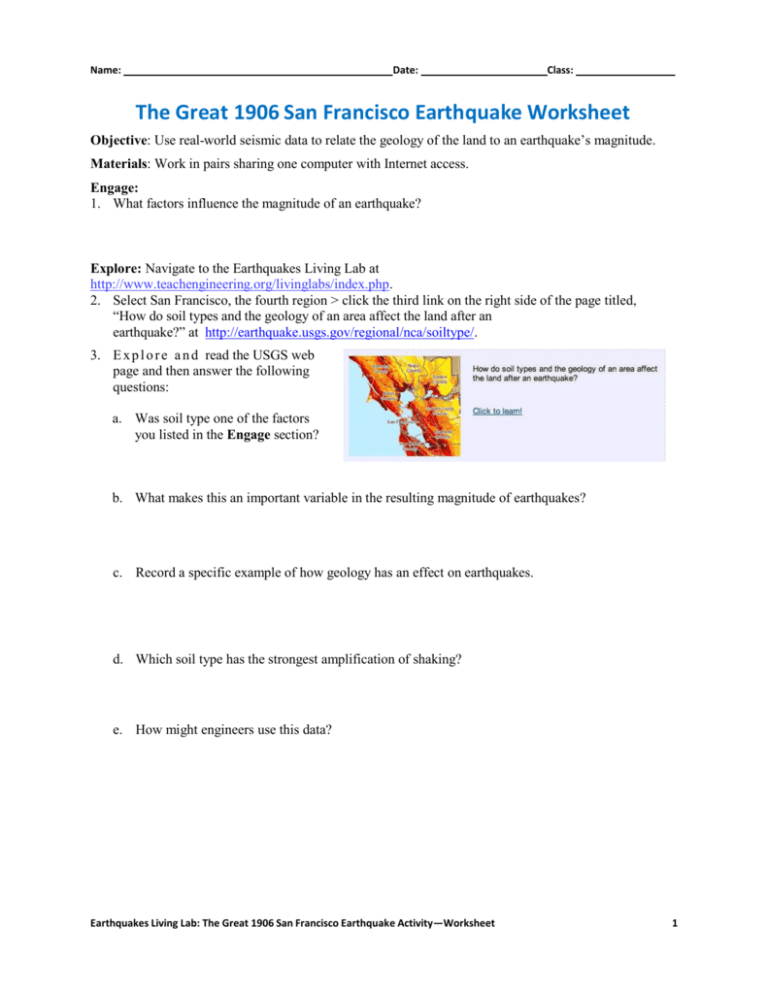
Name: Date: Class: The Great 1906 San Francisco Earthquake Worksheet Objective: Use real-world seismic data to relate the geology of the land to an earthquake’s magnitude. Materials: Work in pairs sharing one computer with Internet access. Engage: 1. What factors influence the magnitude of an earthquake? Explore: Navigate to the Earthquakes Living Lab at http://www.teachengineering.org/livinglabs/index.php. 2. Select San Francisco, the fourth region > click the third link on the right side of the page titled, “How do soil types and the geology of an area affect the land after an earthquake?” at http://earthquake.usgs.gov/regional/nca/soiltype/. 3. E x p l o r e a n d read the USGS web page and then answer the following questions: a. Was soil type one of the factors you listed in the Engage section? b. What makes this an important variable in the resulting magnitude of earthquakes? c. Record a specific example of how geology has an effect on earthquakes. d. Which soil type has the strongest amplification of shaking? e. How might engineers use this data? Earthquakes Living Lab: The Great 1906 San Francisco Earthquake Activity—Worksheet 1 Name: Date: Class: 5. In the left corner of the USGS web page, select “Earthquakes.” Find two earthquakes of the same magnitude and answer the questions below. a. Compare and contrast two earthquakes with the same magnitudes but different locations in the world. Use the links to view where on the map these earthquakes occurred. b. Looking at the two earthquakes you chose, record information from the “Tectonic Summary” for both locations. (The “Tectonic Summary” information is below the map for each location.) Are any variables the same in both locations? 6. Return to the original USGS web page and click the far-left link labeled “Historic Earthquakes.” Select 1906 from year options listed. Then scroll about halfway down, under Publications and Documentaries, and click on the link for the “1906 San Francisco Earthquake,” which gets you to a USGS web page at http://earthquake.usgs.gov/earthquakes/states/events/1906_04_18.php. a. Read about the 1906 San Francisco earthquake and explore the different links on the left side of the page. b. Record at least five observations, including at least one from the 1906 earthquake photos. Earthquakes Living Lab: The Great 1906 San Francisco Earthquake Activity—Worksheet 2 Name: Date: Class: 7. Return back to the Earthquakes Living Lab main page at http://www.teachengineering.org/livinglabs/earthquakes/ and select Japan. Read the paragraph on a 1995 earthquake located on the left side of the page, then click on the picture corresponding to this earthquake (above the paragraph), which takes you to the Earthquake Effects page at http://crack.seismo.unr.edu/ftp/pub/louie/class/100/effects-kobe.html. 8. Read through this information, paying special attention to the photographs. Record at least five observations about this earthquake. 9. How are the effects of these earthquakes the same? How are they different? What are some possible reasons for the differences between these earthquakes and the damage they caused? Explain: 10. What patterns did you notice between geology and magnitude? 11. How do you think engineers might use this information? Elaborate: 12. How do you think seismologists and geologists might work together to create maps of where earthquakes are most likely to occur (probability maps) of earthquake areas? Evaluate: 13. Your engineering team is hired to create a public service announcement (PSA) about the soils found in the San Francisco area and the hazards related to earthquakes. Create a one-minute announcement that informs people about these hazards. Use any information found on the Earthquakes Living Lab and USGS pages. Earthquakes Living Lab: The Great 1906 San Francisco Earthquake Activity—Worksheet 3
